Conference attendees get in-person look at HDRFS research labs in Las Vegas
During tours at the University of Nevada, Las Vegas, scientists visited a drone aviary and witnessed real-time measurements of carbon-based aerosols.
By Amanda Heidt
April 2024
As interdisciplinary as the HDRFS project is, it’s not always possible for researchers spread out across Las Vegas and Reno to meet regularly. As such, the annual conference, held in March at the University of Nevada, Las Vegas (UNLV), is always an exciting time to reconnect with colleagues and get up to speed on the project’s latest research. Over the meeting’s second afternoon, HDRFS students and faculty at UNLV invited attendees to tour labs in the campus’s newest facility along its innovation corridor, the Advanced Engineering Building, and to learn about novel work underway at the university.
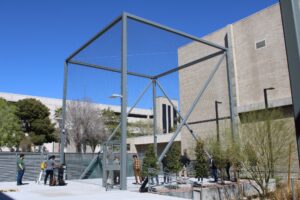
Lab visit to the Drone Aviary that is part of UNLV’s newest building, the Advanced Engineering Building. (Credit: Amanda Heidt)
Many HDRFS projects rely on unmanned aircraft, such as drones, to carry sampling equipment into the field. These projects present not only a scientific challenge—such as how to miniaturize and automate experiments, for example—but an engineering one as well. Drones must be balanced to fly properly, and weighing them down can limit their range and battery life. Among the stops was a visit to the new drone aviary, where researchers can safely workshop their creations.
One of the drones shared during the demonstration is being developed by members of the hydrology and cyberinfrastructure innovation components to reimagine how researchers collect valuable soil data in the immediate aftermath of a burn. Rather than sending people into unpredictable terrain, a drone can safely land, even in an active burn area, to conduct what is known as a water drop penetration time test—a quick assessment of how water repellent soil is after being burned, and therefore how susceptible it might be to erosion. According to Markus Berli, the lead researcher of the hydrology component, “multi-million dollar decisions are made on the basis of this test, and all you need is a dropper and a stopwatch.” But with modern tools, he adds, “I think we can do better.”
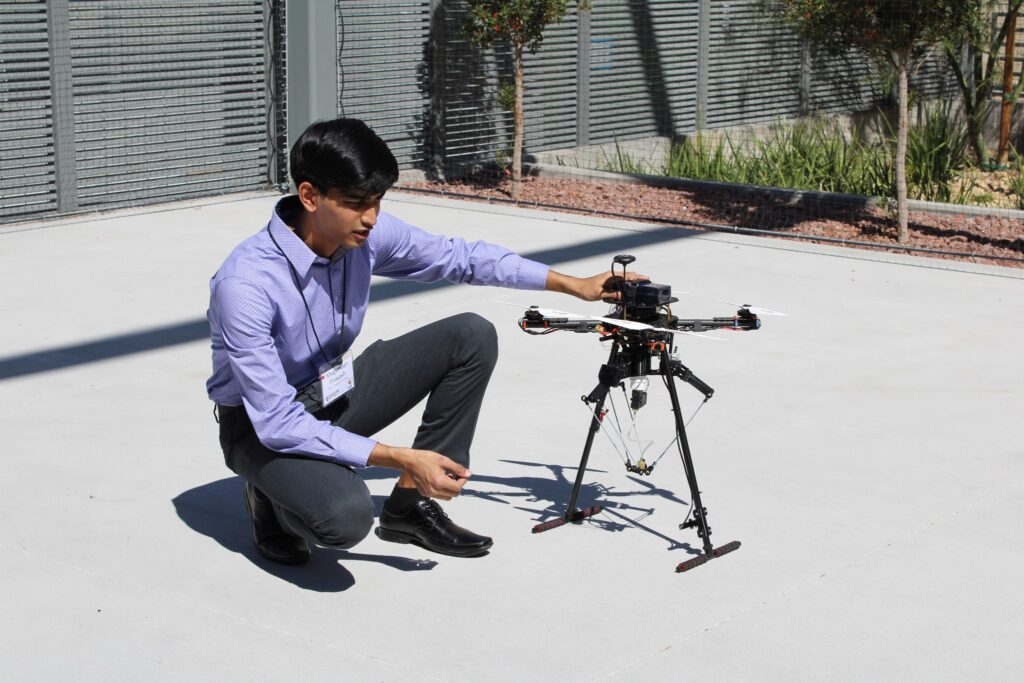
Mugundan Prakash, a graduate student at UNLV and DRI, showing off the drone that will be able to conduct a water drop penetration time (WDPT) test for the HDRFS project. (Credit: Amanda Heidt)
Upstairs in the building’s 6,000 square foot dry lab, three students from the lab of HDRFS cyberinfrastructure innovation investigator Venkatesan Muthukumar walked attendees through various aspects of the drone’s engineering. Unlike the aviary, the scene of a fire is dynamic and uneven, and yet the water drop penetration time test needs to be conducted under largely static conditions. Different groups are working on a series of telescoping legs to help the drone land levelly, designing lighting to create a consistent background for imaging the droplet, and creating an algorithm to identify and track the drop as it soaks into the ground.
The algorithm is also being trained on thousands of images to look for other potential trends that could be helpful but have previously been undetectable. At its core, the water drop time penetration test measures how long it takes a drop of water to soak into the soil, but Berli and his colleagues think that the angle of the sides of the drop, known as the contact angle, could also be a helpful metric for studying soil conditions. “For a physicist, it’s the ultimate measure of water repellency, but it’s not as easily measured with the naked eye.”
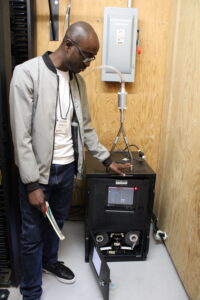
Olusanya Onamuti, running a demonstration of the carbonaceous aerosol speciation sampler. (Credit: Amanda Heidt)
Lastly, Olusanya Onamuti, a student in the lab of UNLV atmospheric scientist Lung-Wen Antony Chen, ran a demonstration of the group’s carbonaceous aerosol speciation sampler—a mini fridge-sized box that continuously collects air from the roof of the building and parses its carbon-based aerosols into different groups. Carbonaceous aerosols can consist of hundreds of thousands of organic compounds, some of which, such as black carbon from the burning of fossil fuels, are important to the study of climate change and human health.
The group is currently refining its classifying algorithm, and has been running the machine continuously at UNLV to test its efficacy. During the recent Super Bowl, for example, they identified a spike in black carbon, possibly attributed to the swell of people that arrived in the city. But Chen is also working with other members of the fire emissions and their atmospheric aging component to develop a manifold that would allow them to take the sampler into the field and collect air on-site. “Right now, if there’s a major fire campaign—a barrel burn or a fuel burn—we can mobilize to send the device out,” he says.
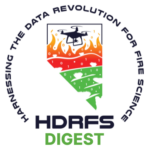 Special Issue of HDRFS Digest, a quarterly publication of the Harnessing the Data Revolution for Fire Science Project, which is a five-year research project funded by the National Science Foundation’s Established Program to Stimulate Competitive Research “EPSCoR” (under Grant No. OIA- 2148788) focusing on enabling healthy coexistence with wildland fire and the mitigation of wildfire danger to human life, infrastructure, and the landscape in Nevada and the intermountain western U.S.
Special Issue of HDRFS Digest, a quarterly publication of the Harnessing the Data Revolution for Fire Science Project, which is a five-year research project funded by the National Science Foundation’s Established Program to Stimulate Competitive Research “EPSCoR” (under Grant No. OIA- 2148788) focusing on enabling healthy coexistence with wildland fire and the mitigation of wildfire danger to human life, infrastructure, and the landscape in Nevada and the intermountain western U.S.

 Acknowledgement: This material is based upon work supported by the National Science Foundation under Grant No. OIA- 2148788.
Acknowledgement: This material is based upon work supported by the National Science Foundation under Grant No. OIA- 2148788.